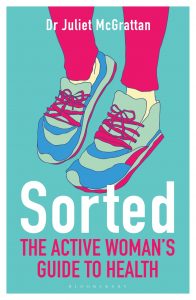Do you have a favourite pain killer that you reach for when a headache, toothache or back pain strikes? What happens when the pain doesn’t seem to ease? A really common question that I’ve been asked is whether you can take paracetamol and ibuprofen at the same time. Is it ok to do that? Is it dangerous to take ibuprofen if you are already on paracetamol? It’s great that people are wary and questioning when it comes to drugs because certain drug interactions can be harmful.
The short answer to this question is ‘Yes’ for adults. It is generally safe for adults to take both paracetamol and ibuprofen at the same time. (The advice for children is ‘Not unless advised to do so by a health professional’). Of course, I’d like to give you a bit of a longer answer to be on the safe side, so please read on! Let’s first consider each drug in turn and then I’ll share my usual pain killer plan.
Paracetamol
Paracetamol, the most commonly used pain killing drug. It’s useful for so many conditions including pain relief for musculoskeletal aches and pains, sore throats, and helping to reduce a high temperature.
The adult dose is 1g up to four times a day. Tablets generally contain 500mg so this means you can take two tablets up to four times a day. (Children’s doses are lower and more complicated so please check the label).
If you’re taking paracetamol and it’s not working, then first check you are taking the correct dose. I’m always amazed how many people will tell me it’s not helping when they have only taken one tablet. Then check that you are taking the maximum number of tablets in a 24 hour period – that’s eight 500mg tablets if you are taking two tablets four times a day (a total of 4g). Again it’s surprising how many people will say their pain is no better when they only took one dose ten hours ago. Spreading the doses out evenly through the day is the best way to take it. Leave at least four to six hours between doses. Taken regularly at the correct dose paracetamol is a good pain relief for common conditions.
DO NOT TAKE MORE THAN THE RECOMMENDED DOSE – paracetamol is very harmful in overdose and simply taking a few extra every day over a number of days can push you into harmful toxic levels which may not give you symptoms but can lead to liver failure. Please go to Accident and Emergency urgently if you have been taking more than the recommended dose.
Paracetamol is safe for most people. Some situations where it may not be safe are:
- Liver disease
- Kidney disease
- Long term alcohol mis-use
- Known allergy to paracetamol
- Taking other drugs that contain paracetamol (common in flu remedies)
- Taking other medications that might interact such as some drugs used to treat epilepsy and cancer (check the leaflet).
Please speak to your pharmacist if you have any doubt about whether paracetamol is safe for you.
Ibuprofen
Ibuprofen is from a family of drugs called Non Steroidal Anti Inflammatories or NSAIDs for short. Other common NSAIDs include naproxen and diclofenac and they work in a different way to paracetamol, although they are still useful for the same outcomes of reducing pain and lowering fever. Sometimes ibuprofen can seem to work better for certain types of pain, particularly those involving swelling and inflammation.
The adult dose of ibuprofen is generally 200mg to 400mg three times a day with at least four to six hours between doses. If the lower dose of 200mg doesn’t work then increase to the bigger dose of 400mg. The maximum in 24 hours is six 200mg tablets or 1200mg (1.2g). It’s best to take ibuprofen with some food and drink and not on an empty stomach.
The doses of the other NSAIDs are different and are lower for children so please read the labels and take advice if you need to.
NSAIDs however aren’t generally as safe as paracetamol and there are more instances where people shouldn’t use them or should at least use them cautiously, these include:
- Previous or current stomach ulcers
- Asthma – they can trigger an attack in some people
- You are already taking daily aspirin
- Liver or kidney problems
- Cardiovascular problems such as heart failure, angina, stroke
- High blood pressure – they can elevate blood pressure over time
- Pregnancy (ibuprofen will enter breast milk in small amounts so you may prefer to avoid it)
- Allergy to NSAIDs or aspirin
- Taking other medications that may interact with ibuprofen such as other NSAIDs, aspirin, warfarin and some anti-depressants (check the leaflet).
If a doctor wants you to use an NSAID but has concerns about it affecting your stomach or gut lining due to indigestion or ulcers, then they may prescribe a ‘stomach-protecting’ tablet alongside it such as lansoprazole from a family of drugs called Proton Pump Inhibitors or PPIs for short.
Long term use of NSAIDs should be avoided. The lowest effective dose for the shortest time is best. Please ask your pharmacist if you are unsure whether you should take ibuprofen.
So, here is my plan for simple pain relief for adults:
- Take paracetamol and see if it helps
- If paracetamol helps, then keep taking it at the recommended dose until your pain has settled
- If paracetamol helps but the pain is still a problem, then add in ibuprofen. You can take this at the same time as the paracetamol or you can stagger the two medications and leave a couple of hours in between each
- If paracetamol doesn’t help, then try ibuprofen instead as it may respond to this
- At any point if you aren’t sure where pain is coming from, it’s very severe or it is unrelieved by simple pain killers then see a health care professional
- If you have any questions regarding pain relief, what is suitable for you to take and whether it may interact with any medications you are taking then speak to your local pharmacist for advice.
You can find more information about each drug including possible side effects on the NHS website
Hope that helps.
There are more answers to questions like these and lots of health information to help you lead a happy and active life in my book Sorted: The Active Woman’s Guide to Health.

Disclaimer: I can’t give personal medical advice and as always with health advice, reading something online doesn’t replace seeing your doctor who knows your medical history and can assess you in person. So, if you are unsure then always seek the opinion of a health care professional.








3 Comments